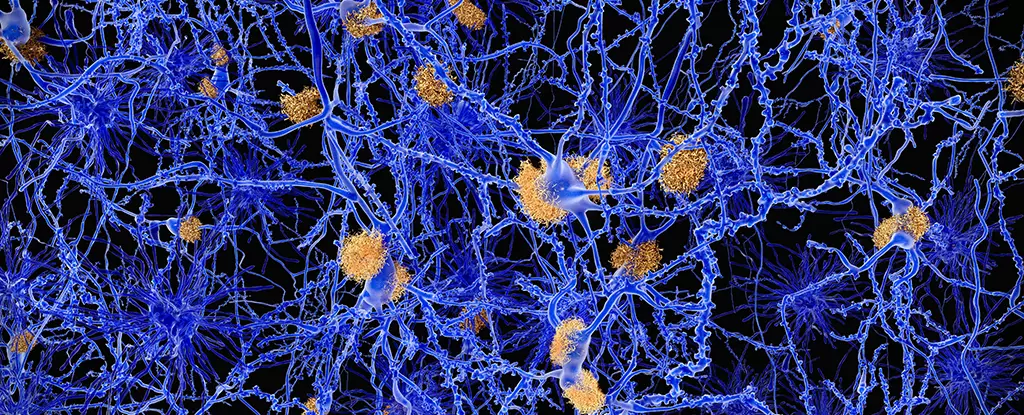Alzheimer’s disease stands as one of the most daunting challenges within modern medicine, and its rise mirrors the aging of our global population. Currently, an estimated 10 million new cases of dementia emerge each year, a figure poised to escalate alarmingly as life expectancy increases. This stark reality begs for not just awareness but innovative solutions that could potentially alter the trajectory of neurodegenerative diseases. The recent breakthrough involving specially designed nanomaterials that target misfolded proteins offers a glimmer of hope in an otherwise overwhelming landscape of despair.
The pathophysiological complexity of Alzheimer’s involves misfolded proteins that aggregate into toxic plaques, wreaking havoc on neuronal structures. As protein misfolding leads to destructive pathways within the brain, traditional approaches often lag behind in addressing these root causes. Enter the international team of researchers and their creative approach to the dilemma. Their utilization of peptide amphiphiles that interact with both lipids and water creates an intriguing mechanism for trapping amyloid beta proteins—one of the primary culprits—before they clump together and inflict damage.
Unpacking the Mechanism: Peptide Amphiphiles and Trehalose
At the heart of this innovative approach lies a deep understanding of molecular interactions. Peptide amphiphiles are remarkable compounds that possess dual affinities; their ability to mix with both hydrophilic and hydrophobic substances maximizes their efficacy. By incorporating trehalose, a naturally occurring sugar found in various organisms, the researchers enhanced the peptide amphiphiles’ ability to prevent amyloid beta misfolding altogether. Trehalose not only safeguards against misfolding on a macromolecular level but also reduces structural stability, inviting amyloid beta proteins into a framework where they lose their capacity for harm.
This fascinating interplay between sugar and peptide amphiphiles epitomizes the forward-thinking attitude required in today’s biomedical landscape. It disrupts the traditional narratives surrounding Alzheimer’s treatment, focusing on destigmatizing early intervention rather than awaiting the establishment of toxic amyloid structures. Such disruptive thinking positions this research at the forefront of potential Alzheimer’s treatments—offering not just hope but a tangible strategy to alleviate human suffering.
The Challenge of Practical Application: A Call for Further Research
While the early findings are promising, it is essential to temper enthusiasm with a dose of realism. The in vitro results must transition into the realm of in vivo studies, where the implications of these engineered nanomaterials on human biology remain largely untested. Only through rigorous clinical trials can we ascertain the efficacy and safety of these findings when faced with the complexities of a live human body.
Additionally, while the implications of tackling Alzheimer’s are universally relevant, the question of accessibility cannot be overlooked. Innovative treatments must be paired with a deliberate focus on equitable health care solutions, ensuring that all populations can benefit from these advancements. If such treatments remain locked behind a financial barrier, we risk widening the chasm of health disparities rather than closing it.
Hope Amidst Despair: A New Era of Alzheimer’s Treatment
Ultimately, the exploration of nanotechnology in combating neurodegenerative diseases showcases the remarkable ingenuity of modern science. It represents a shift in focus towards preventative measures against protein aggregation, fostering a narrative that prioritizes proactive interventions over futile responses to established conditions. The fact that we are employing molecularly engineered nanomaterials to address the heart of neurodegeneration signifies a transformative shift in our approach to Alzheimer’s research.
As we navigate these complex waters, it is essential to maintain an optimistic yet cautiously realistic perspective. The potential of these findings must be matched with ethical considerations and policies that promote inclusivity. In doing so, we can move towards a future that not only combats the epic tragedy of Alzheimer’s but does so in a way that embraces the dignity of human life across all spectrums.

